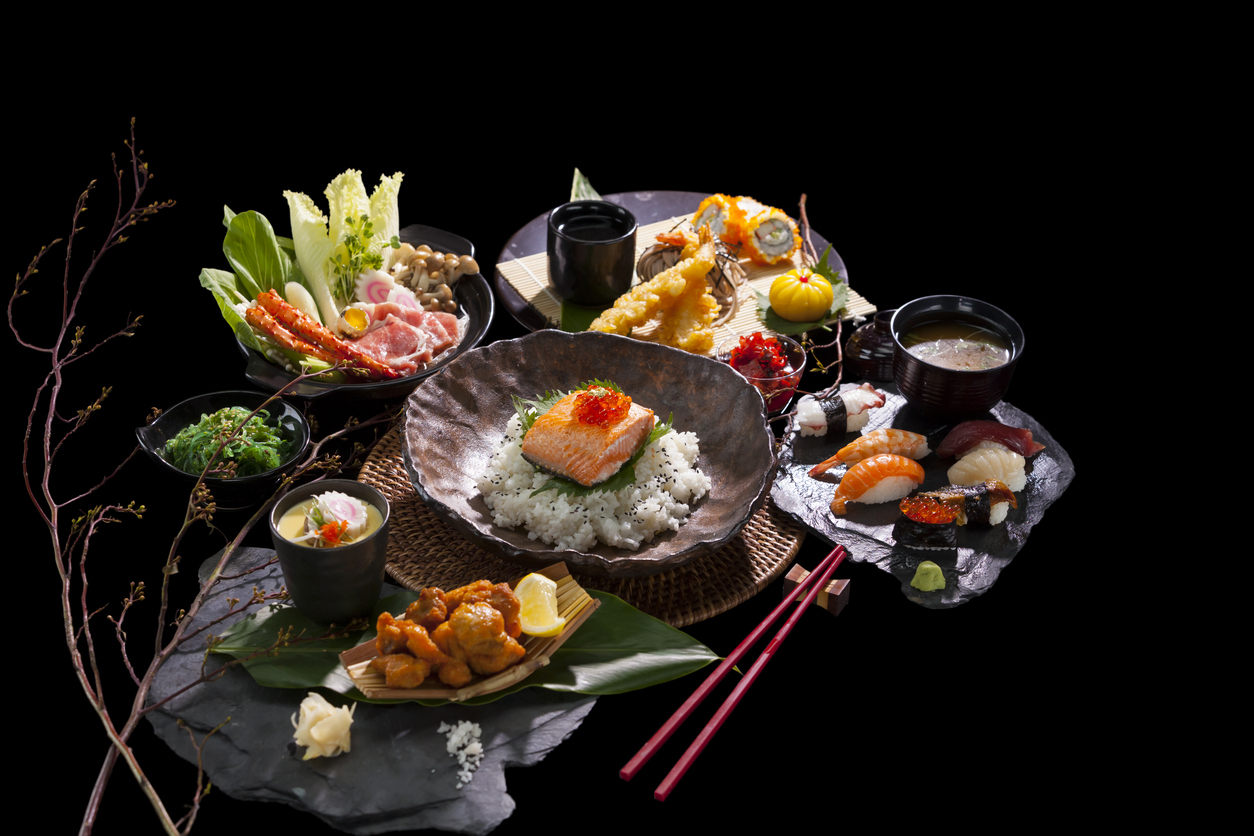 dreamedmstudio
dreamedmstudio
Japanese food has for some time now been one of the the most internationally popular of all cuisines – and above all sushi and sashimi. But this is of course just the tip of the iceberg. This archipelago’s wide variety of flora and fauna on both land and sea nourishes a washoku (traditional culinary culture) based on seasonal ingredients that emphasises relative simplicity – and it’s so rich and diverse it’s been deemed a UNESCO Intangible Heritage of Humanity. Its full depth is rarely captured by the Japanese restaurants you can find abroad – including remarkable regional dishes rarely if ever found beyond its borders.
Moreover, the foodie culture here has evolved amazingly; for example, Japan now boasts the most three-Michelin-starred restaurants of any country in the world, and Tokyo the most of any city. So here’s a little (and note: far from exhaustive) overview to whet your appetite for your next trip to the Land of the Rising Sun!
First off, for the most part the common denominators in many Japanese meals are white rice, as well as frequently miso soup (see below) and tsukemono (pickled vegetables), although various forms of noodles – often served in soup – may also be eaten as meals in themselves. Traditionally there’s been emphasis on grains, vegetables, and seafood, with proteins consisting mostly of chicken and relatively sparing amounts of red meat. Seasonings consist largely of soy sauce, sake, vinegar, sugar, salt, dashi (fish-and-kelp stock), and mirin (rice cooking wine). And types of cooking most often used are raw, grilled, simmered/boiled, steamed, and deep fried.
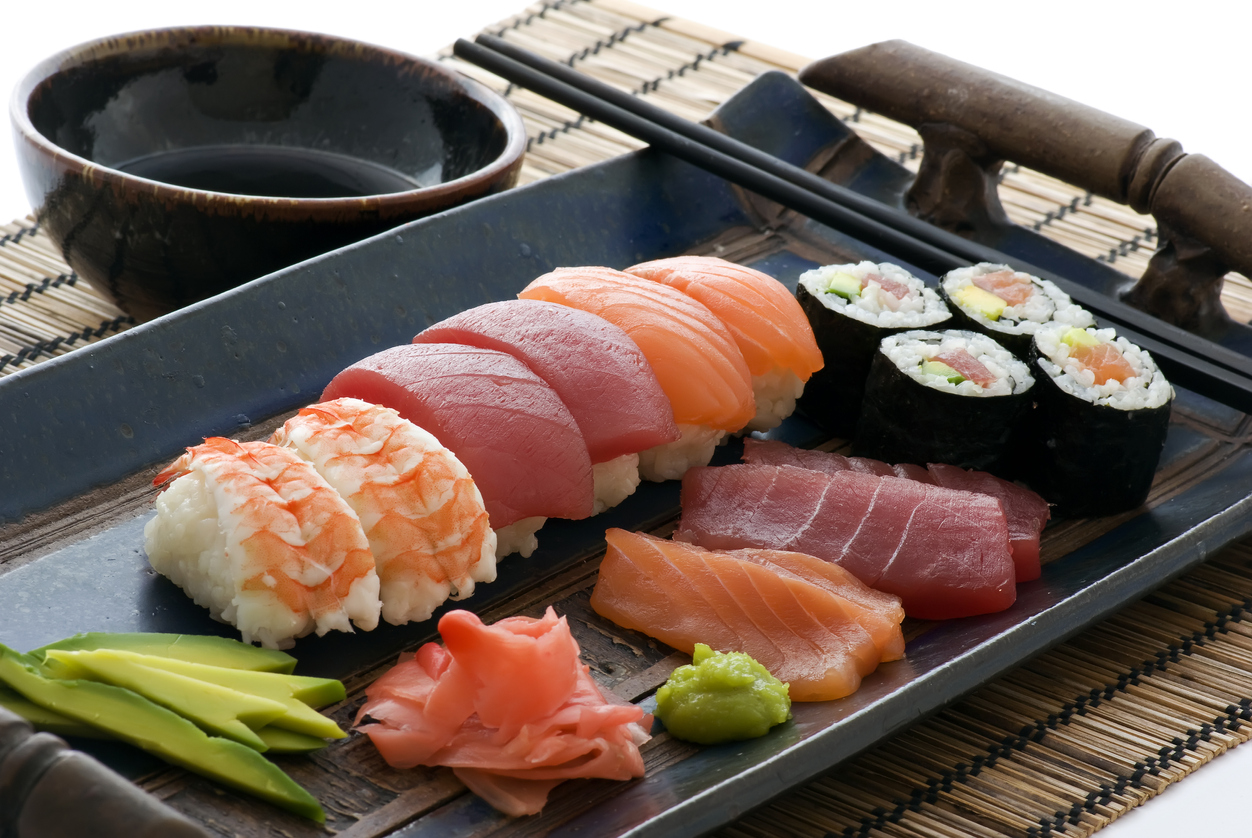 hlphoto
hlphoto
(Mostly) Raw Deals
Well, I may as well start off with what’s most familiar to many of us. As you likely already know, sushi is a Japanese-style “tapa” of vinegared rice paired with some kind of raw seafood, usually fish (particularly tuna, salmon, carp, yellowtail, and mackerel) but also squid, imitation crab, or eel. One prominent category of sushi is temaki and similar “rolls” in which the rice is bundled in with the seafood – often along with veg ingredients such as cucumbers, avocados, and scallions – in a seaweed wrapper (certain types of rolls may also be garnished with fish roe, and others have nouvelle and/or Westernised additions like cream cheese). Sashimi, meanwhile, are thin slices of seafood (all the above mentioned, as well as the likes of dolphin and shark) or meat (all the usual ones, as well as some which are more exotic, including horse, goat, and boar). Both are often served with with soy sauces as well as highly spicy wasabi (Japanese horseradish) paste and gan (pickled, shaved ginger).
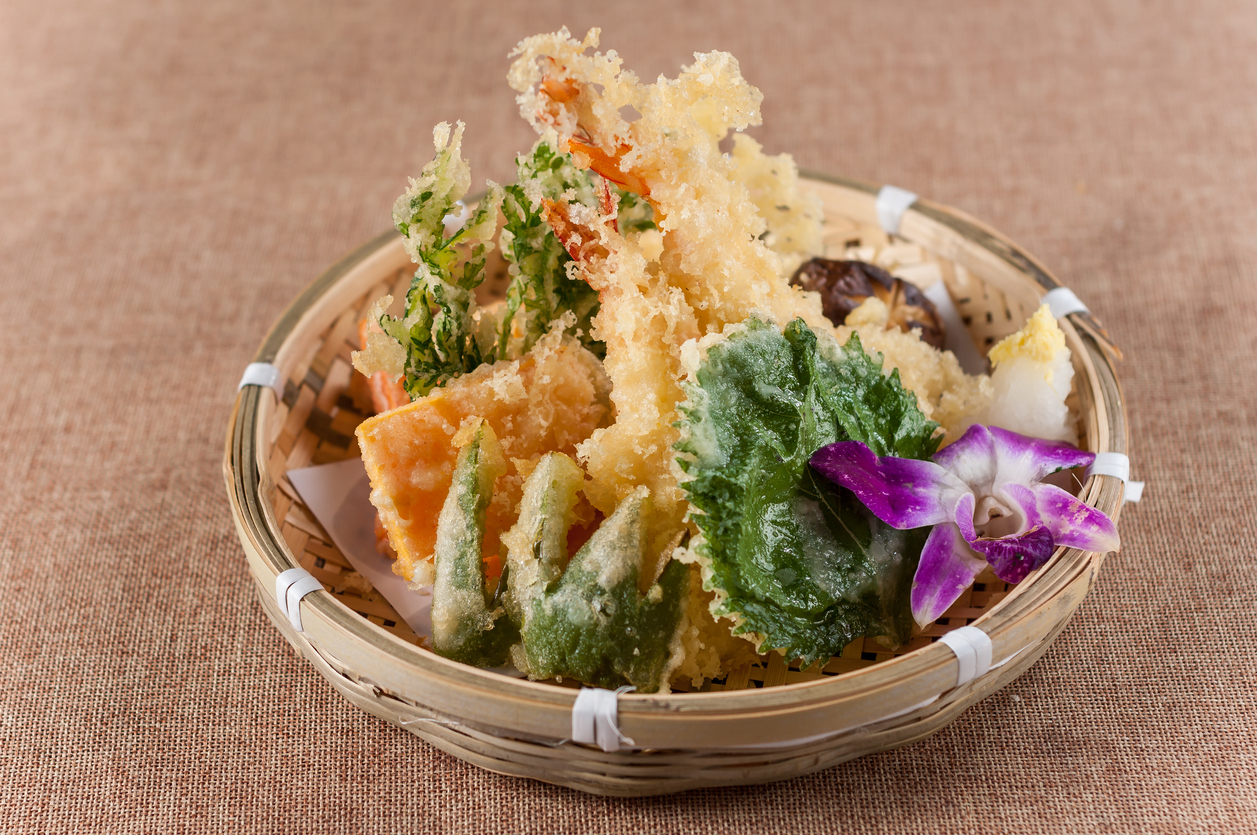 bm4221
bm4221
Tempura
Not everyone may be aware of this, but this style of veggies flour-battered and deep-fried veggies (as well as shrimp and fish) isn’t native to Japan but was actually introduced in Nagasaki in the 16th century by Portuguese missionaries. It’s eaten dipped in a mixture of soy sauce and the aforementioned dashi (fish-and-kelp stock), and mirin (rice cooking wine).
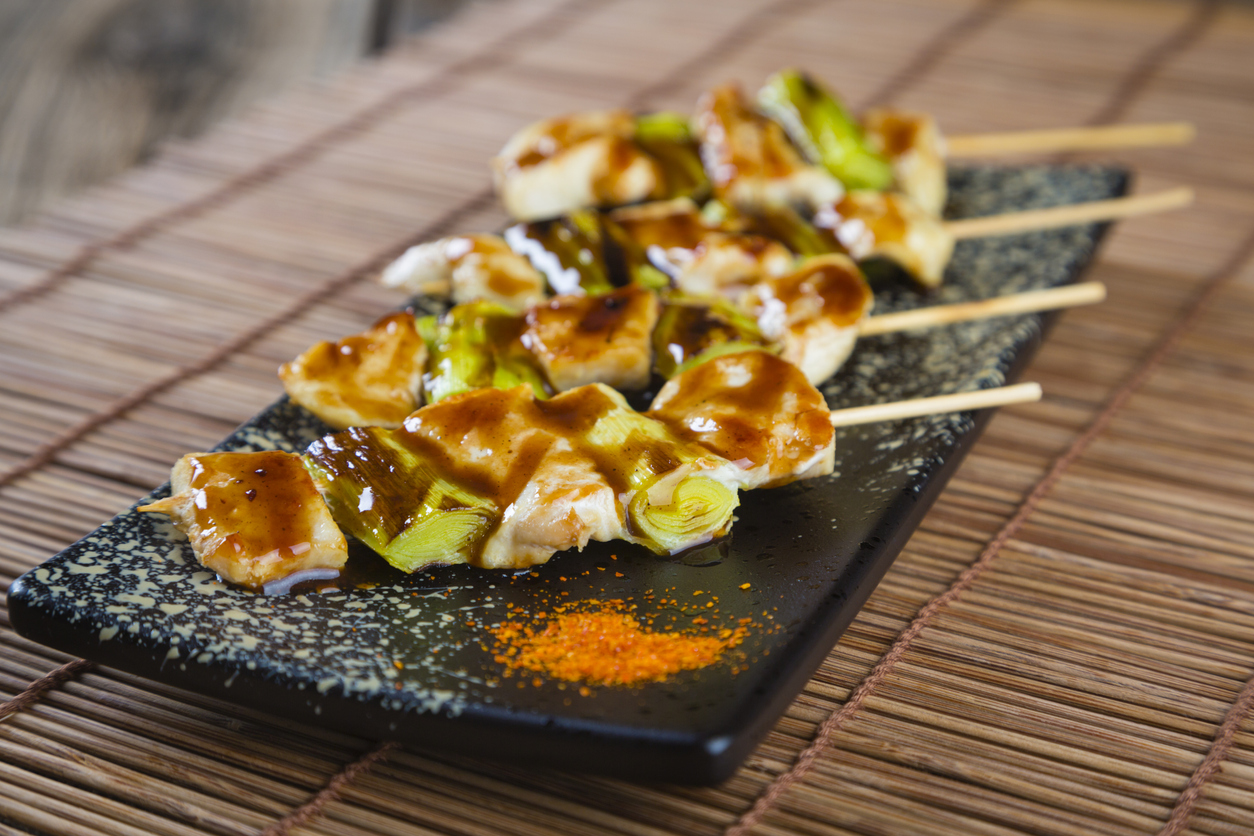 RichLegg
RichLegg
Yakitori
The Japanese take on meat skewers or brochettes is mostly about chicken but can also be other meat as well as veg. And keep in mind that apart from the white meat you might expect, that here (as opposed to Japanese restaurants abroad) chicken can also take some pretty funky forms, including gizzards, cartilage, intestine, hearts, and livers. Yum, yum!
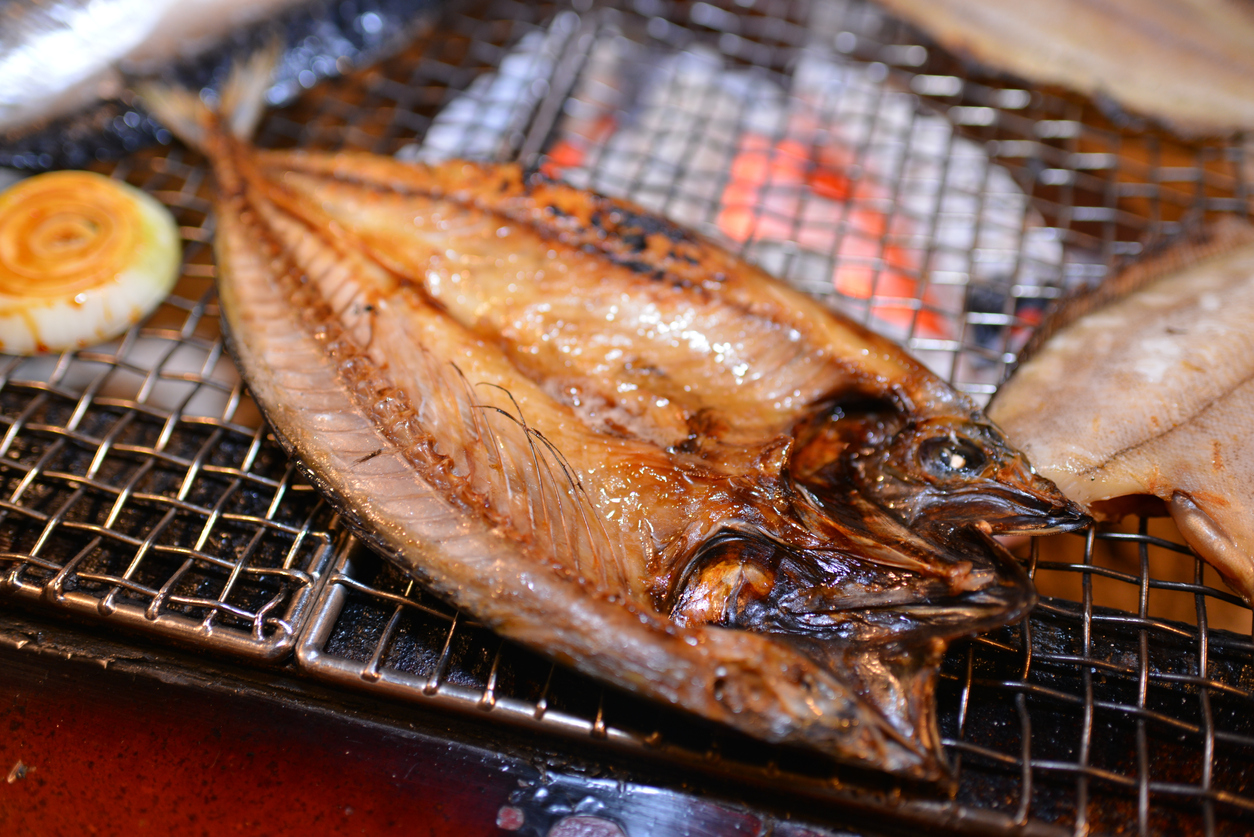 TopPhotoImages
TopPhotoImages
Robata
Also known as robatayaki, this is Japanese barbecue, originated by fishermen in the country’s northernmost island Hokkaido and cooked on a flat open grill over glowing hardwood charcoal. Though traditionally seafood (as you might expect) along with veg, these days robata also includes various meats – all prepared with careful timing in terms of weight and type of food, and imbued with a delightful smoky flavour.
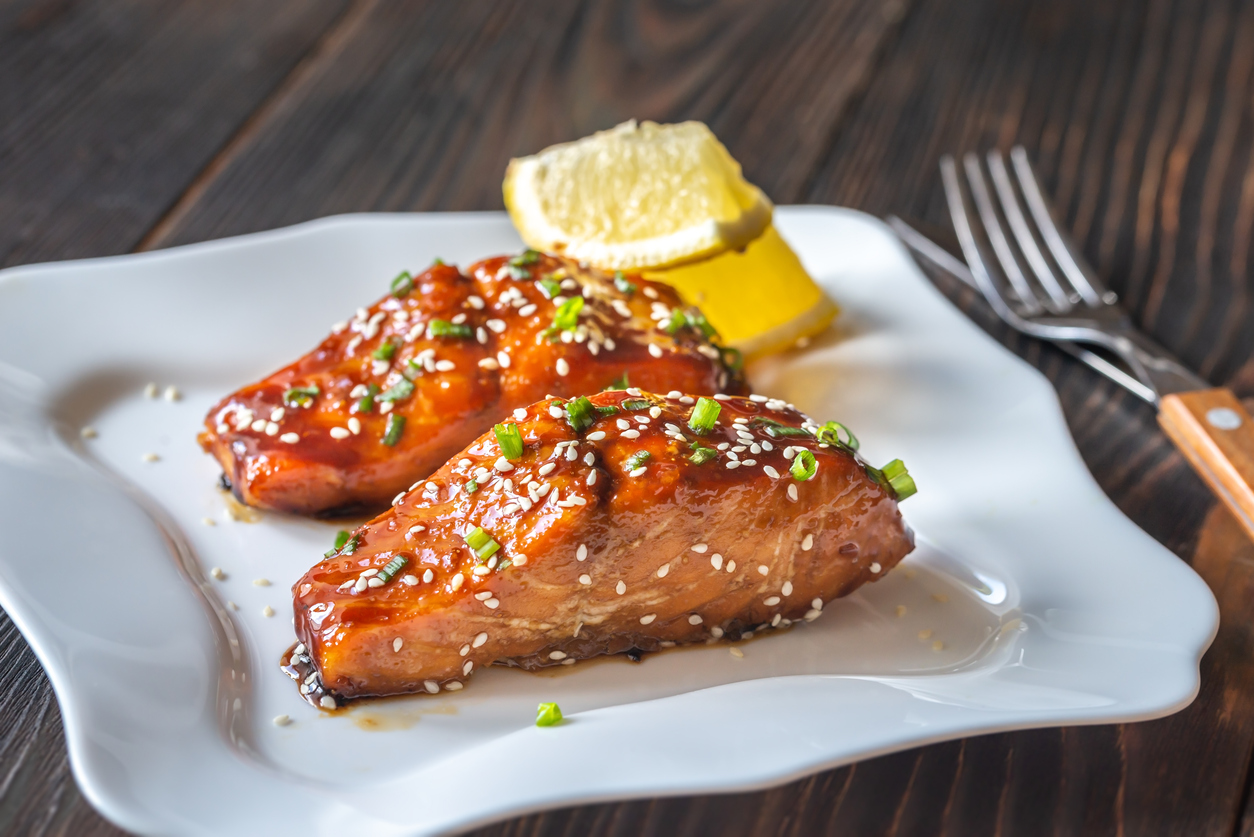 AlexPro9500
AlexPro9500
Teriyaki
Also fairly familiar to Westerners by now, this is broiled or grilled protein – in Japan, most often fish such as salmon (above), cod, tuna, or mackerel, with meats being more common in the West – annointed with a savoury-sweet glaze of soy sauce, mirin, and sugar. These days a touch of chili flakes is sometimes added to the glaze for a little spicy kick.
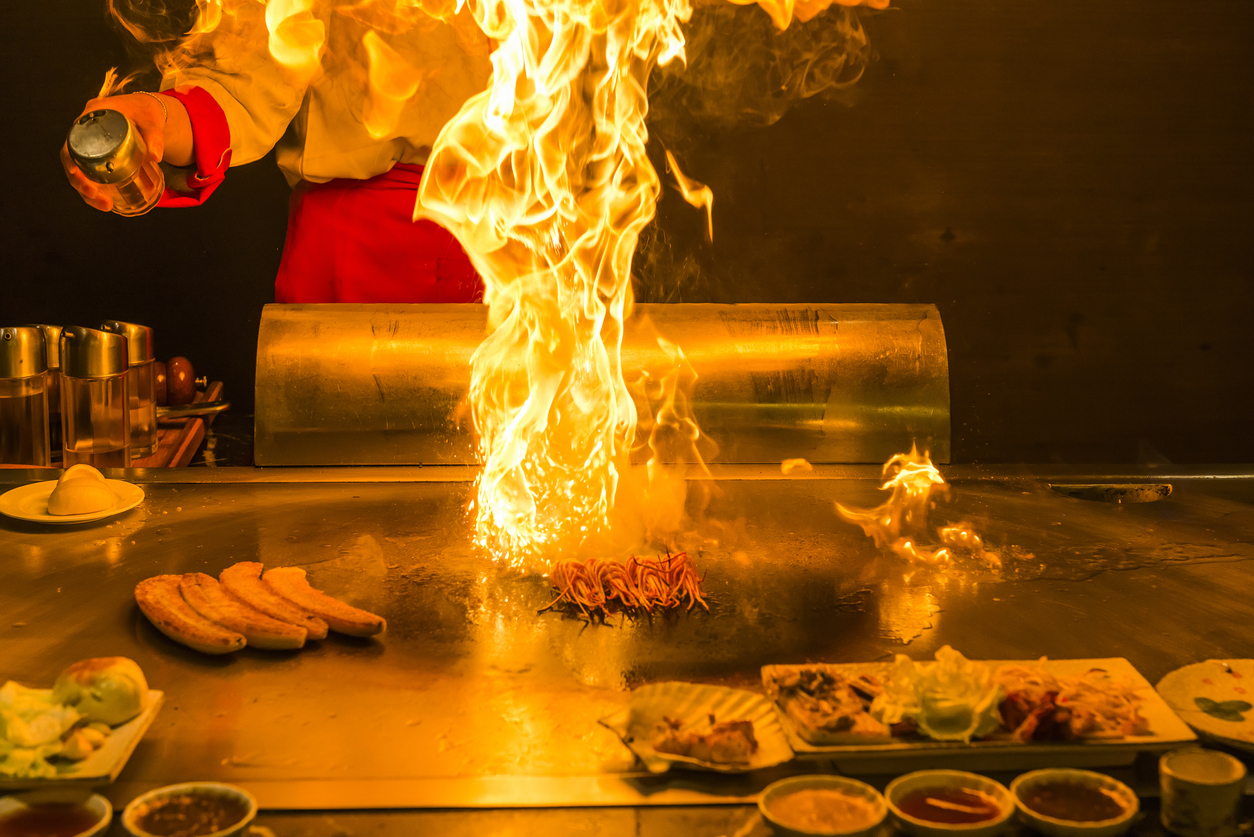 hxdyl
hxdyl
Teppanyaki
This style of cooking on a teppan (wide, flat, gas-heated grill) was invented after World War II and is familiar to many in the West because it’s been popularised by restaurants such as the Benihana chain, with the chef dramatically slicing and dicing right in front of diners. Cooked in soybean oil, the foods are all the usual meat/seafood/veg suspects, plus the likes of eggs and fried rice. If you fancy a little theatre with your feed, teppanyaki is always a treat.
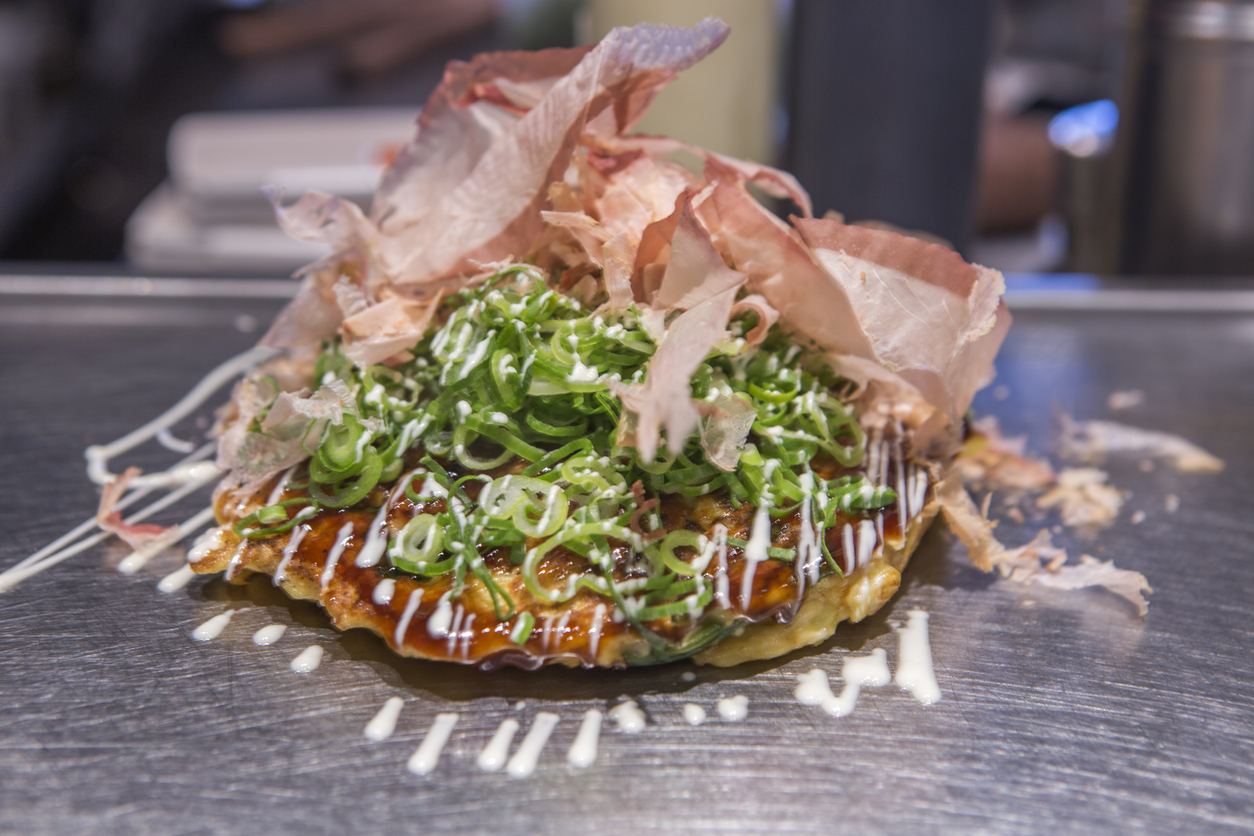 tekinturkdogan
tekinturkdogan
Okonomiyaki
Another communal-style favourite prepared on a teppan, these are a kind of omelet made with eggs, wheat flour, diced cabbage, grated yam added filling such as shrimp, squid, and pork belly, varied seasonings. The result is then garnished with toppings such as Japanese-style mayonnaise, sweet otafuku sauce, and seaweed or bonito flakes. Okonomiyaki can be prepared by a chef in front of diners or by the diners themselves with the ingredients provided by the restaurants; it’s found all over the country, but especially popular in and around Osaka (generally considered Japan’s foodie capital) and Hiroshima.
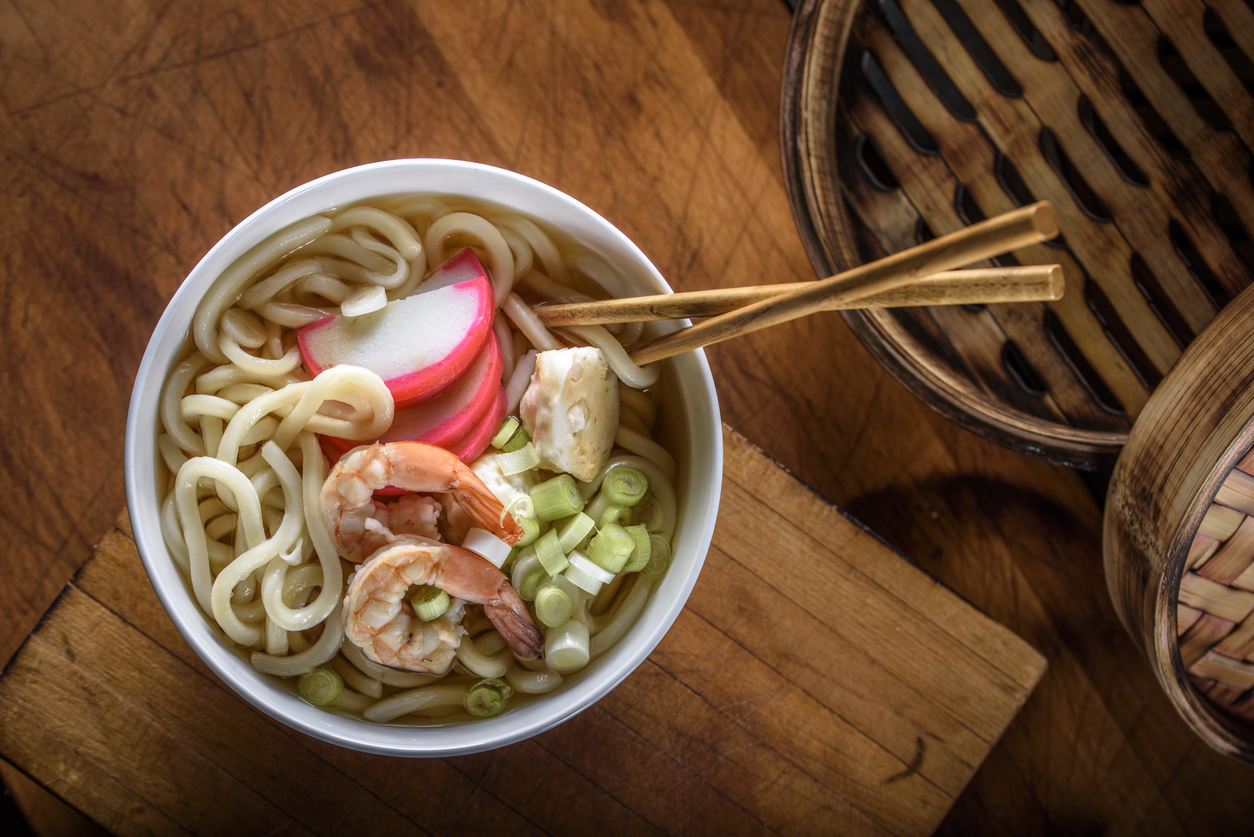 4kodiak
4kodiak
Oodles of Noodles
Pasta is a big national staple, and throughout Japan you’ll see shops and restaurants devoted to the three main types. Udon soup is fat wheat noodles in a broth called kakejiru, made of the ubiquitous soy sauce, dashi, and mirin, and topped with scallions, sometimes along with tempura, deep-fried tofu, or fish cake. Soba, by contrast, are thinner and often served cold (by itself or with various veg garnishes) and dipped with chopsticks into a sauce called tsuyu (similar to kakejiru). They can also come in a tsuyu-based soup with veg and protein toppings. And last but not least, ramen is a Chinese import introduced in Yokohama‘s Chinatown in the early 20th century, its slender, chewy noodles served in a fish-based broth topped with sliced pork, nori (dried seaweed), scallions, and menma (fermented bean sprouts). (Fun fact: in Japan, it’s not considered rude to noisily slurp your noodles – in fact, it’s expected!)
 the.epic.man
the.epic.man
Shabu-shabu
Like ramen a 20th-century addition to the national cuisine, the local version of Chinese hotpot is named for the sound the Japanese hear when stirring the ingredients in the pot sitting in front of them on the table. Those ingredients include thinly sliced beef (or other meats) as well as various vegetables, tofu, and noodles. Then after shabu-shabu-ing your item, you dip it into soy, ponzu, or sesame-seed sauce before popping into your mouth.
 PamelaJoeMcFarlane
PamelaJoeMcFarlane
Miso Soup
Ubiquitous at meals (often including breakfast), this warming concoction is based on miso paste made of fermented soybeans, along with dashi, into which is added chunks of tofu, onion, wakame (a kind of seaweed), and occasionally other veg such as carrots, sweet potatoes, and radishes.
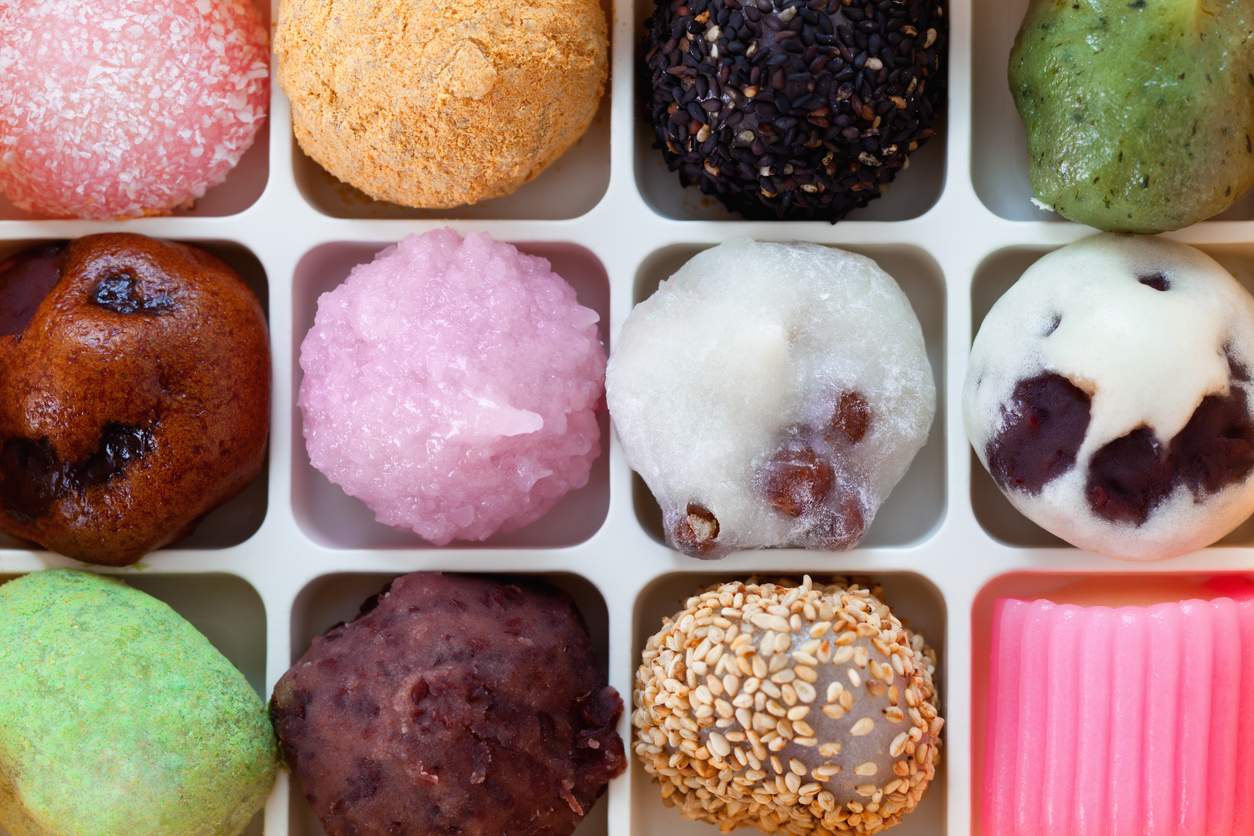 Antares71
Antares71
Sweet Touches
Probably the best known sweet, commonly found in Japanese restaurants abroad, is mochi, little moulded cakes made from glutinous rice, cornstarch, and of course sugar, to which various colourings and flavourings (such as matcha green tea) and stuffings (like anko red-bean paste and ice cream) are added; speaking of which, in recent times mochi -flavoured aisukurīmu (ice cream) has also become popular. Anko is actually a rather popular filling/ingredient for a fair number of treats, such as the red-snapper-shaped pastries (held to be good luck) called taiyaki. Amhitsu is a bowl of red-algae gelatin cubes eaten with fresh fruit and sweet syrup, and speaking of gelatin, another tasty treat you’ll find especially in summer is “jelly”, which is a parfait glass of coffee-flavoured gelatin served with whipped cream, ice cream, or sweetened condensed milk.
In terms of foreign imports, several crowd pleasers have been borrowed from France, such as the local adaptation of the parfait, consisting of ice cream atop a layer of corn flakes, crowned with whipped cream, fresh fruit, and optional additional toppings such as syrup and bits of biscuit or cake. Crêpes with fruit, ice cream, whipped cream, and more are also popular, and often sold as street snacks. And from Mont Blanc comes monburan, sponge cake base topped with fresh and whipped cream, then overlaid with strands of chestnut purée.
All sounds delish, eh? Come to Japan and itadakimasu (bon aptétit)!

